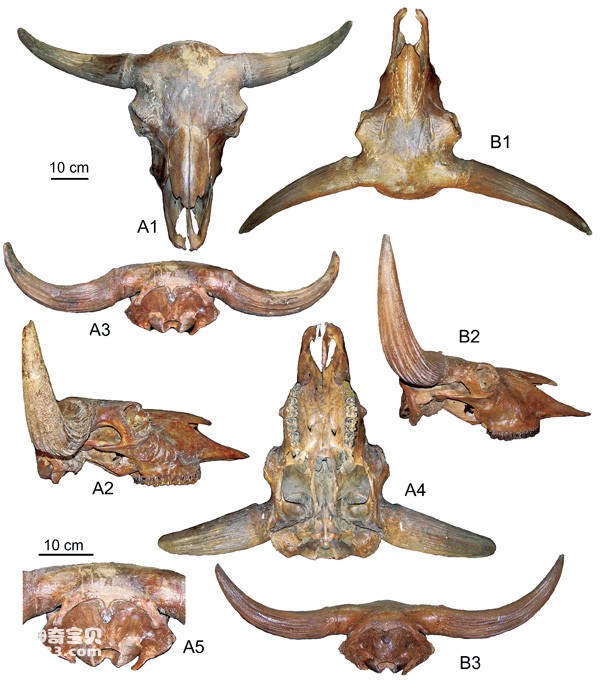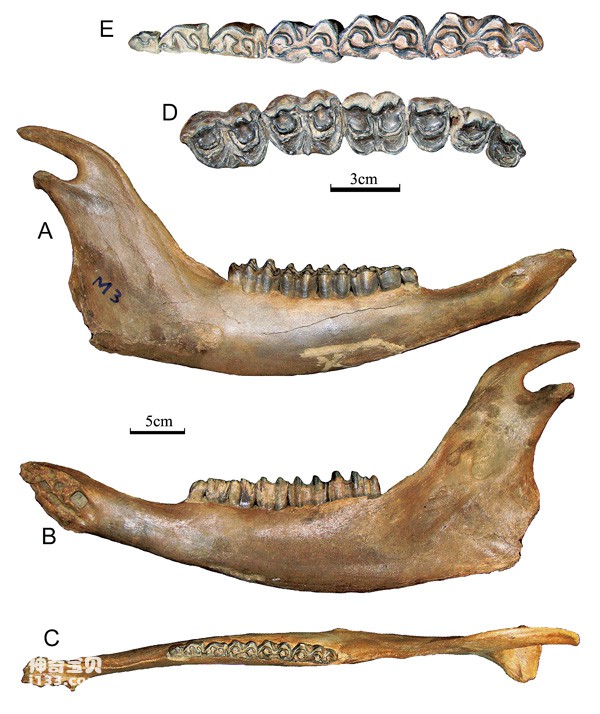In recent years, a large number of basically well-preserved bison (Bison) fossil materials have been discovered in Northeast my country, providing important materials for further research on bison fossils. Researchers from the Institute of Vertebrate Paleontology and Paleoanthropology of the Chinese Academy of Sciences and others described two bison skulls and three mandible fossils from the Dabusu area of Qian'an County, Jilin Province about 20,000 years ago, and believed that they were found in the Northeast Plains of my country. Late Pleistocene bison should be classified as steppe bison species. The study was published in the fourth issue of Acta Anthropologica Sinica published in 2013, providing new evidence to further clarify the biological characteristics, evolutionary system and diffusion route of fossil bison in my country.

prairie bison skull
Bison is a common animal in the Quaternary fauna of northern my country, especially the ancient Chinese bison (Bison palaeosinensis) from the Nihewan Period, which is regarded by some scholars as the ancestor of the Middle-Late Pleistocene bison in the entire Holarctic region. In addition, the bison is also an important member of the mammoth-coaty rhinoceros fauna in Northeast my country. Although it has been discovered for nearly a century and there have been many sporadic reports, there has not yet been a dedicated document, and the previous reports have not None of the skull fossil material is complete.
According to the researcher of the same article, the bison fossil described this time is the most complete material reported so far. The shape and measurement data of its skull and horn center fall within the scope of the steppe bison species (Bison priscus) in Europe, America and Siberia. Therefore, the bison fossils from the Late Pleistocene in the northeastern plains of my country should be classified as steppe bison species. There are many problems with previous attempts to classify the Late Pleistocene bison of the Northeastern Plains into Bison exiguous (Matsumoto, 1915), because the latter is very different from the Northeastern Late Pleistocene bison in terms of type origin, geological age, and morphological characteristics. The steppe bison is a species widely distributed in the Holarctic region during the Middle to Late Pleistocene, and is also one of the most important members of the mammoth-coaty rhinoceros fauna.
The fossil record currently discovered in my country shows that there is a fossil record discontinuity between the ancient Chinese bison in the early and middle Pleistocene and the steppe bison in the late Pleistocene. Therefore, the bison in Northeast my country probably immigrated from Siberia in the late Pleistocene. This time is basically consistent with the explosive dispersal time of ancient humans. The steppe bison was one of the most common animals in northern Eurasia during the late Middle to Late Pleistocene and is the ancestor of the North American continental bison. The bison fossils in the northeastern plains of my country all coexisted with the mammoth-coaty rhinoceros fauna, and their age is the middle to late Pleistocene.

Mandible and cheek dentition of prairie bison
animal tags:
We created this article in conjunction with AI technology, then made sure it was fact-checked and edited by a Animals Top editor.